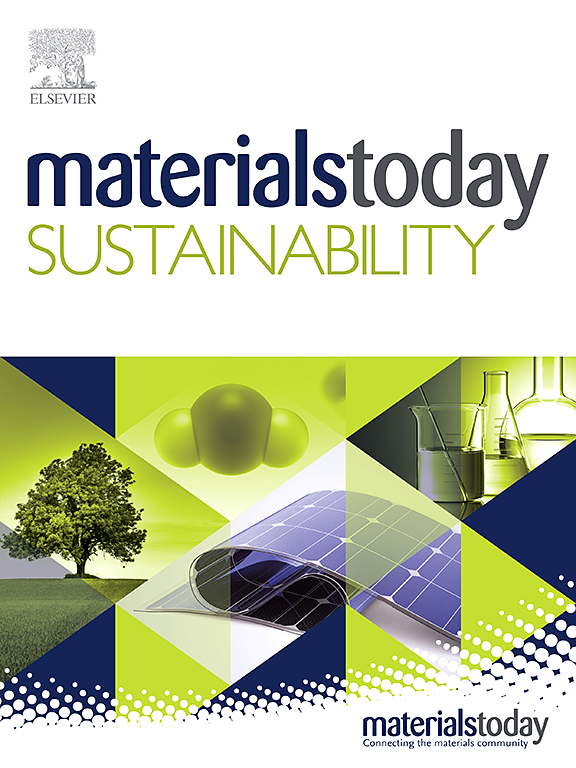分层双氢氧化物用于可持续的海水制氢
IF 7.9
3区 材料科学
Q1 GREEN & SUSTAINABLE SCIENCE & TECHNOLOGY
引用次数: 0
摘要
本文研究了碱性海水条件下的析氧反应(OER),使用了一系列微孔/介孔氧化物/氢氧化物催化剂,特别是层状双氢氧化物(LDHs)。本研究探索了通过水热合成将LDH涂覆在Ni泡沫上(直接涂在Ni泡沫上),将Fe、Ni溶液浸涂在Ni泡沫上,并将LDH电沉积在Ni泡沫上的一步法。与其他方法相比,直接沉积的水热合成相当稳定,并且本研究能够报告在一系列成分(即不同比例的Ni-Fe)以及三元体系(如Ni-Co-Fe)上的电化学OER性能。电化学测量(CV和LSV)表明:铁以4:1的比例在海水中产生了最低的过电位(330 mV, 100 mA/cm2),这与传统新鲜碱性水的文献报道非常一致——铁和Co等元素掺杂Ni的作用及其氧化态(通过XPS检测)是提高OER催化活性的关键,这对海水中的可操作性至关重要,从而有助于可持续和环保的制氢。这项研究还表明,正如Pourbaix图所预测的那样,氯/次氯酸盐化学在这些高碱性条件下被很大程度上抑制,尽管对所有细胞成分的更广泛的降解研究正在进行中。本文章由计算机程序翻译,如有差异,请以英文原文为准。

Layered double hydroxides for sustainable hydrogen production from seawater
This work presents investigations on the Oxygen Evolution Reaction (OER) under Alkaline Seawater conditions, using a range of microporous/mesoporous oxide/hydroxide catalysts, notably, Layered Double Hydroxides (LDHs). This study explored a one-step method of coating LDHs onto Ni foams by Hydrothermal Synthesis (directly onto a Ni foam), Dip-coating of Fe, Ni solutions onto the Ni foam and Electrodeposition of LDH onto the Ni foam as well. Hydrothermal Synthesis with direct deposition was considerably stable compared to the other methods, and this research was able to report the electrochemical OER performance on a range of compositions, viz. Ni–Fe in several ratios, and also ternary systems like Ni–Co–Fe. The electrochemical measurements (CV and LSV) showed that Ni–Fe LDHs with Ni: Fe in a 4:1 ratio gave the lowest overpotential (330 mV at 100 mA/cm2) in sea water, which was very much in sync with reported literature on conventional fresh alkaline water – the role played by doping of Ni by Fe, and others like Co, and their oxidation states (examined by XPS) holds the key to enhancing the OER catalytic activity, which is critical for operability in seawater, thus contributing to sustainable and environmentally friendly hydrogen production. This study also demonstrates that Chlorine/Hypochlorite chemistry is largely suppressed under these highly alkaline conditions as predicted by the Pourbaix diagram, although a more extensive degradation study for all cell components is ongoing.
求助全文
通过发布文献求助,成功后即可免费获取论文全文。
去求助
来源期刊

Materials Today Sustainability
Multiple-
CiteScore
5.80
自引率
6.40%
发文量
174
审稿时长
32 days
期刊介绍:
Materials Today Sustainability is a multi-disciplinary journal covering all aspects of sustainability through materials science.
With a rapidly increasing population with growing demands, materials science has emerged as a critical discipline toward protecting of the environment and ensuring the long term survival of future generations.
 求助内容:
求助内容: 应助结果提醒方式:
应助结果提醒方式:


